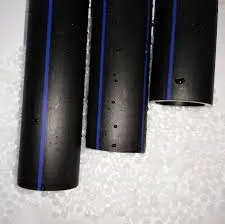dets. . 05, 2024 11:02 Back to list
drain pipe fittings
Understanding Drain Pipe Fittings Essential Components for Efficient Plumbing
In the realm of plumbing, drain pipe fittings are integral components that ensure water and waste are efficiently directed through a plumbing system. Whether you are installing a new piping system or repairing an existing one, understanding drain pipe fittings is crucial for both functionality and durability. This article delves into the types, functions, and installation of drain pipe fittings, providing insights into their importance in plumbing systems.
Types of Drain Pipe Fittings
Drain pipe fittings come in various types, each designed for specific functions. Here are some of the most common fittings you’ll encounter
1. Elbows These fittings allow pipes to change direction, typically at a 90-degree or 45-degree angle. Utilizing elbows properly helps maintain flow while avoiding excessive torque on pipes.
2. Tees Shaped like the letter T, these fittings allow for the connection of three pipes. They are useful for branching off a main line into other directions, facilitating the movement of wastewater effectively.
3. Reducers As the name suggests, these fittings are used to connect pipes of different diameters, allowing flow transition from a large pipe to a smaller one. This is particularly important in areas where space is limited.
4. Caps and Plugs These fittings are designed to close off the end of a pipe. Caps cover the entire pipe-end, while plugs are used for smaller openings. Both are essential for creating sealed systems or temporarily blocking access points.
5. Wyes Similar to tees, wyes allow for the branching off of pipes, but they are designed to do so at a more gradual angle, promoting better flow and reducing turbulence.
6. Cleanouts Essential for maintenance, cleanout fittings provide access to the inside of pipes for cleaning and removal of blockages. Installing cleanouts in strategic locations can save time and effort when addressing plumbing issues.
Material Considerations
Drain pipe fittings are available in several materials, each with distinct advantages and disadvantages
drain pipe fittings

- PVC (Polyvinyl Chloride) Lightweight, resistant to corrosion, and easy to install, PVC is a popular choice for residential plumbing. It is ideal for draining systems where chemical resistance is required.
- ABS (Acrylonitrile Butadiene Styrene) Known for its strength and durability, ABS fittings are often used in drainage systems because of their ability to withstand cold temperatures.
- Cast Iron While heavier and more expensive, cast iron fittings are incredibly durable and effective at sound dampening. They are commonly used in commercial installations and in applications where noise reduction is a priority.
- Copper Though more expensive than plastic options, copper fittings are long-lasting and resistant to bacterial growth. They are often used for water supply lines rather than drainage, but they still play a vital role in the overall plumbing system.
Installation Tips
When installing drain pipe fittings, a few tips can make the process smoother
1. Measure Accurately Before cutting pipes or purchasing fittings, measure carefully. Cutting pipes too short can lead to frustrating rework.
2. Use Appropriate Adhesives For PVC and ABS fittings, ensure you use the right kind of adhesive to create a watertight seal. Follow the manufacturer's guidelines for curing times.
3. Check for Flow Direction Ensure that all fittings are installed in the correct orientation to promote efficient drainage.
4. Regular Maintenance Inspect and clean fittings periodically to prevent buildup and blockages, ensuring optimal flow throughout the plumbing system.
Conclusion
In summary, drain pipe fittings are not just simple connectors; they are crucial components that facilitate proper drainage and waste management. By understanding the different types of drain pipe fittings, their materials, and installation techniques, both professionals and DIY enthusiasts can create efficient plumbing systems that stand the test of time. Whether maintaining an existing system or embarking on new installations, recognizing the importance of these fittings will lead to more effective and reliable plumbing solutions.
-
High Transparency PVC Clear Sheet Super Transparency PVC Sheets & HDPE Cutting Board Supplier
NewsJul.04,2025
-
High-Quality PVC-M Pipe Supplier Trusted PVC Pipe Company & 75mm PVC Connection Pipe Solutions
NewsJul.04,2025
-
PVC Transparent Sheet Roll - Durable & Flexible PVC Plastic Sheet Roll for Industrial & Home Use
NewsJun.24,2025
-
High-Quality PVC PPR Pipes and Fittings Durable ERA PPR Solutions
NewsJun.10,2025
-
High-Quality Large HDPE Sheets & Large Diameter PVC Pipe Durable Large PVC Pipe Supplier
NewsJun.10,2025
-
High Density Polyethylene Cutting Board - Durable & Food Safe
NewsJun.09,2025

